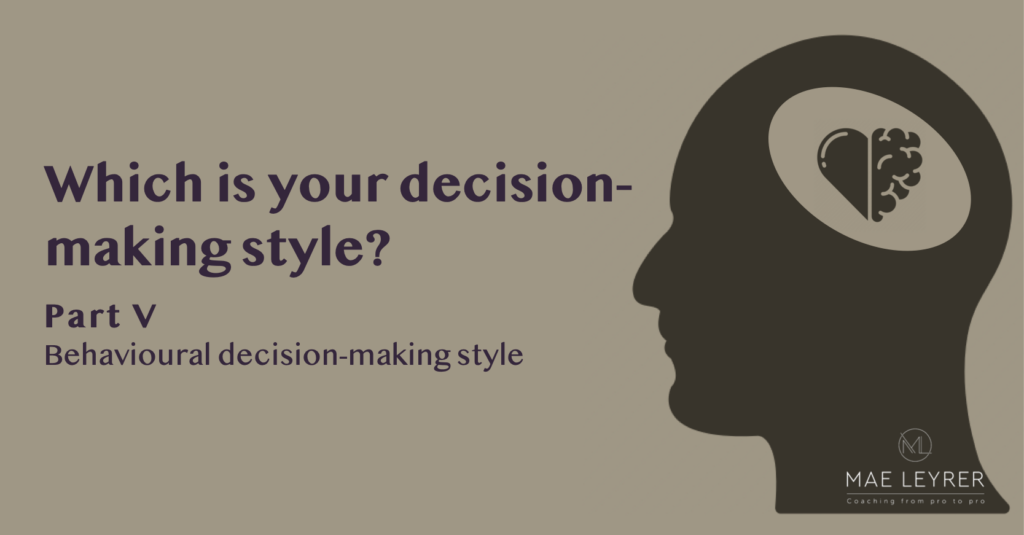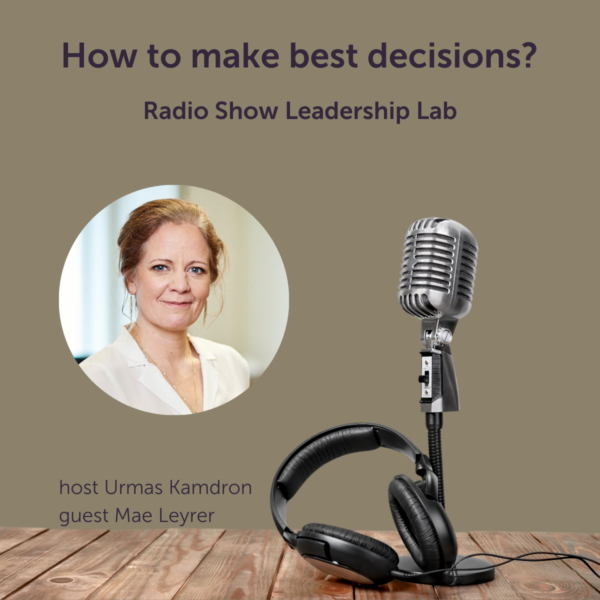

Host: Today we are inspired by our book “Mastering Strategic Storylining: A practical handbook for making better decisions and communicating them flawlessly.”
I have to admit to you Mae – I have read and held in my hand many-many books, yet this is the most practical book that I have ever held in my hand. I don’t know how you managed it… Often books entail lots of theory with some examples and sometimes also few practical exercises. In your book, there are tons of examples, explanations, step-by-step explained framework. How did you come to such practical format?
Mae: It has a lot to do with my personality. Things need to be practical, simple, functional, and usable.
Going back a bit more on the history of this book, then honest answer is, I never planned to write it. As executive, I was keenly interested in decision-making as my decisions had impact far beyond myself. I wanted to make better decisions and was reading many books and collecting different models and frameworks. …
Many of these books entailed theory, but not enough practicality. The frameworks, on the other hand were applicable only in specific situations – one framework for investment decisions, the other for employment decisions, etc.
I was convinced there has to be one simple tool which is applicable in any situation. And so my quest for answers began and I developed Strategic Storylining Framework for my personal use.
At some point in more than one company advisory board members came to me and asked: “Mae, how come whenever you come to us with a situation and a decision, we read your materials and we can never say NO! How is that possible? How do you do this?” I revealed my secret of using the framework …
Host: Today’s global bestsellers are built on the business model that book gives you only partial input and after reading the book one needs to pay thousands of euros for additional training to bring the content to practicality. You have done something completely opposite. From your book one gets all s/he needs to immediately start to use the framework. How are you making money then?
Mae: Money is not my goal. I am happy if sharing this knowledge is helpful to people. Self-actualization and helping others are my goals.
Host: Strategic Storylining is the core of your book and of the better decision-making. What is Strategic Storylining?
Mae: Strategic Storylining is structuring information for decision-making in a way that encompasses as little information as needed and as much as necessary. All of it in an order easy for our brains to digest.
I’ll bring a parallel from storytelling. Every story or tale encompass one or more storylines, which sometimes run in parallel and are illustrated with fictional characters and made-up illustrations. All with the goal of creating emotional experience.
Strategic storyline is used for decision-making and as such it is as rational as possible to help to make the best decision. Strategic storyline includes only facts. No fictional characters nor made-up illustrations, because without facts one cannot make the best decision.
Host: You bring many examples in your book about how to synthesise and clean the information. There is a saying that “language creates the reality”.
I read your book and was amazed how one can truly make the text and information so clear and clean, that all understand it. It made me reflect on how clearly, I communicate. When writing a meeting memorandum, I always want to add my own opinions to it.
Mae: Adding strong opinions is one of the most common mistakes that we as leaders and executives make in strategic decision-making and decision’s communication. One cannot truly understand the situation at hand without looking beyond opinions and beyond ones own hidden agendas.
And what happens if you communicate an opinion. You create opposition in that part of the audience that does not accept you or does not look up to you.
That’s why in strategic and political communication it is important to assure that all understand why such decision was made in the situation and one cannot afford to lose part of the audience.
Using strategic storylining helps to create communication which focuses on creating understanding and not on creating confusion or opposition.
Host: Opinion is related to our own believes and emotions. Many leaders say that they made the decision based on gut feeling and the gut feeling is always right, as it is based on years of experience. How do you see emotional versus rational decision-making?
Mae: Strategic Storyline does not mean that your opinion is fully excluded, because in the first step of using this framework you pull together the big picture. And this you do based on your expertise, knowledge, and gut feeling.
As an executive, I also made many decisions based on my emotions and believes. What I discovered as a leader was, that my believes and experiences come from the past and world around us spins so fast, that what worked yesterday may be contra productive today.
“… believes and experiences come from the past and world around us spins so fast, that what worked yesterday may be contra productive today.”
Host: Can the same framework be used for decision-making in family setting?
Mae: Yes, absolutely.
I use it at home all the time. I have not coached my family members on this framework, yet in decision-making situations I utilize questions that are tied to it and which help to come to united decision.
Host: One part is making better decisions. Yet, a very important part is clear communication of these decisions.
I try to be clear in my communication every day, yet repeatedly am faced with situations where audience does not understand or does not buy into what I say. What are usual mistakes in decision communication?
Mae:
1.
First thing is including opinions and even worst, including them very early in the communication. Communication consists of messages and the first message that includes an opinion will result in partial loss of the audience. People who do not look up to the messenger will create opposition and are likely to miss all the remaining messages.
2.
Second mistake is including too much or completely irrelevant information.
3.
Third mistake is choosing wrong communication channel or wrong message format.
Host: How is a good presentation for decision communication born?
Mae:
1.
2.
3.